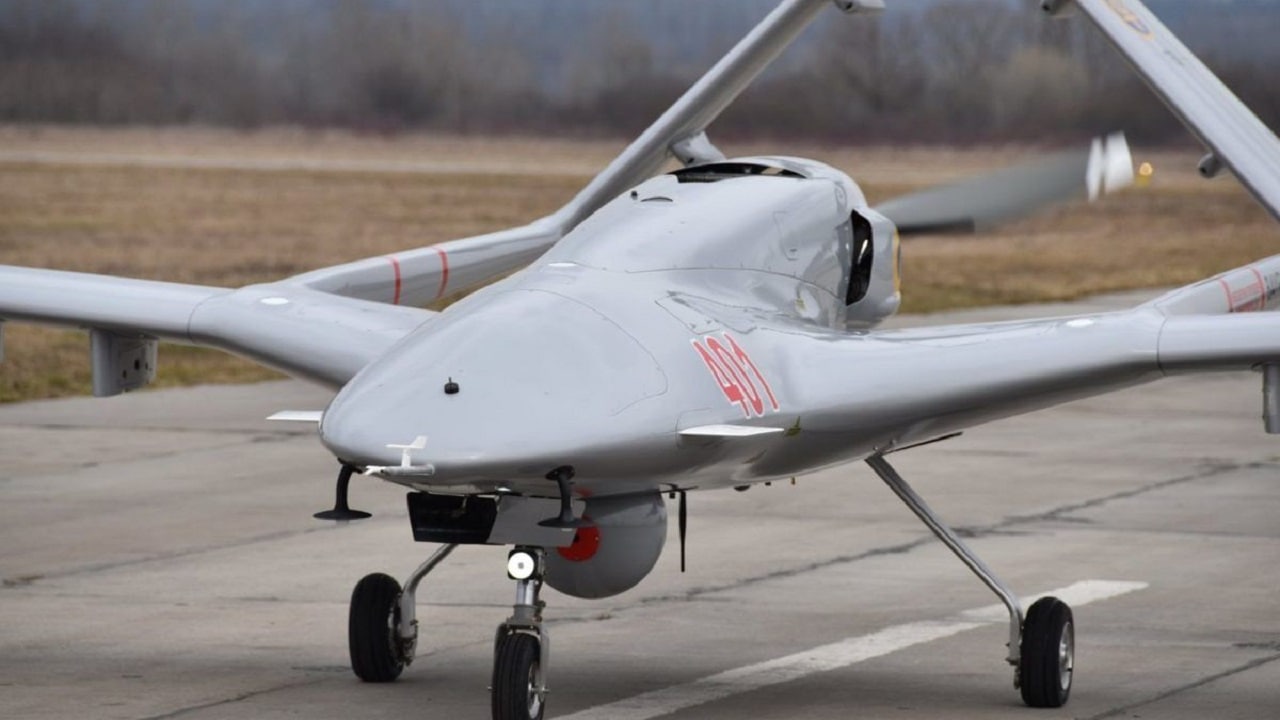Russian Military Feeling the Pain From Ukrainian Drones – Turkish-made drones are manhandling Russian armor in Ukraine. The Bayraktar TB2 unmanned system is making its presence known and the Russians are feeling the heat. While the Ukrainian drone doesn’t have the numbers to be completely decisive, it is making the job of attritting Russian tanks and armored vehicles that much easier. The success of the Bayraktar has elicited oohs and ahhs and cheers from the Ukrainian operators and has given military personnel a needed morale boost.
Ukrainian Drone Inspires the Public
The Bayraktar entered the scene on February 27 when the Ukrainian military released a video of the drone destroying a Russian anti-aircraft system and sending Russian soldiers to an early grave. This quickly made the rounds on Twitter with at least a million views and got social media users fired up. The drone even has a song written about it. This is more evidence that Ukraine may be winning the propaganda and information war.
Destroying Russian Vehicles in Convoys
The Ukrainian military command got excited too as it announced on March 1 the Turkish-made drone removed one Russian tank and two surface-to-air missiles systems from the battlefield. The drones are also creating havoc on Russian convoys having destroyed fuel trucks and logistics vehicles. At least one successful strike happened in the city of Chornobaivka, in southern Ukraine.
The commander of Ukraine’s Air Force, Lt. Gen. Mykola Oleshchuk, said the Bayraktar TB2 drones are “life-giving” in a Facebook post, according to the Wall Street Journal.
The Small Drone Packs a Punch
The medium-altitude, long-range Bayraktars are not large, in fact, they are many times lighter than American Reaper drones. But they punch above their weight, having killed at least 32 Russian vehicles, but like all claims of Russian casualties that number is difficult to confirm. The Ukrainians have been using the Bayraktar since 2019, although there are only about 20 in service.
The Ukrainians Need More
The drone can loiter for around 24-hours with a ceiling of 25,000 feet. Drone operators can be up to 185-miles away. In September, the Ukrainians ordered 24-drones from Turkish defense contractor Baykar Makina. The Turks can’t make them fast enough, so the Ukrainians have agreed to produce their engines.
Unique Design Can Also Assist Other Armaments for Targeting
The drones also have laser range-finders and laser designators to target enemy vehicles for additional strikes from fighters or artillery. The Bayraktars have a “monocoque design and integrates an inverse V-tail structure. The fuselage is made of carbon fiber, Kevlar, and hybrid composites,” according to Defense News.
The payload is 121 pounds with a 105 horse-power engine, and it only flies around 80 miles per hour. But it comes equipped with four Smart Micro Munition laser-guided missiles that have proved their mettle when Azerbaijan used them against Armenia in the Nagorno-Karabakh conflict of 2020.
Why Can’t the Russians Counter a Slow-flying Drone?
It is surprising the Russians are falling prey to the Bayraktars. Russia reportedly has an electronic warfare system called “Belladonna” that can incapacitate drones. This shows that Russian armored columns are advancing without proper air defenses.
It is not clear why the Russian ground forces do not have enough air cover. This is another practice that Russia is usually proficient in, having fought in Syria for so long. The Russians have also not taken out drone bases that control and service the Turkish-made unmanned vehicle. They will have to adjust tactics and bring in electronic warfare and jamming systems to defend against the Bayraktars.
So far, Russia is not using a lot of its own drones in Ukraine. That will probably change as the Russian forces adjust their offensive and defensive operations, but currently, it appears that Ukraine has the edge in unmanned warfare and will continue to knock out Russian vehicles from the sky as the world looks on with enthusiasm.
Now serving as 1945’s Defense and National Security Editor, Brent M. Eastwood, Ph.D., is the author of Humans, Machines, and Data: Future Trends in Warfare. He is an Emerging Threats expert and former U.S. Army Infantry officer. You can follow him on Twitter @BMEastwood.

